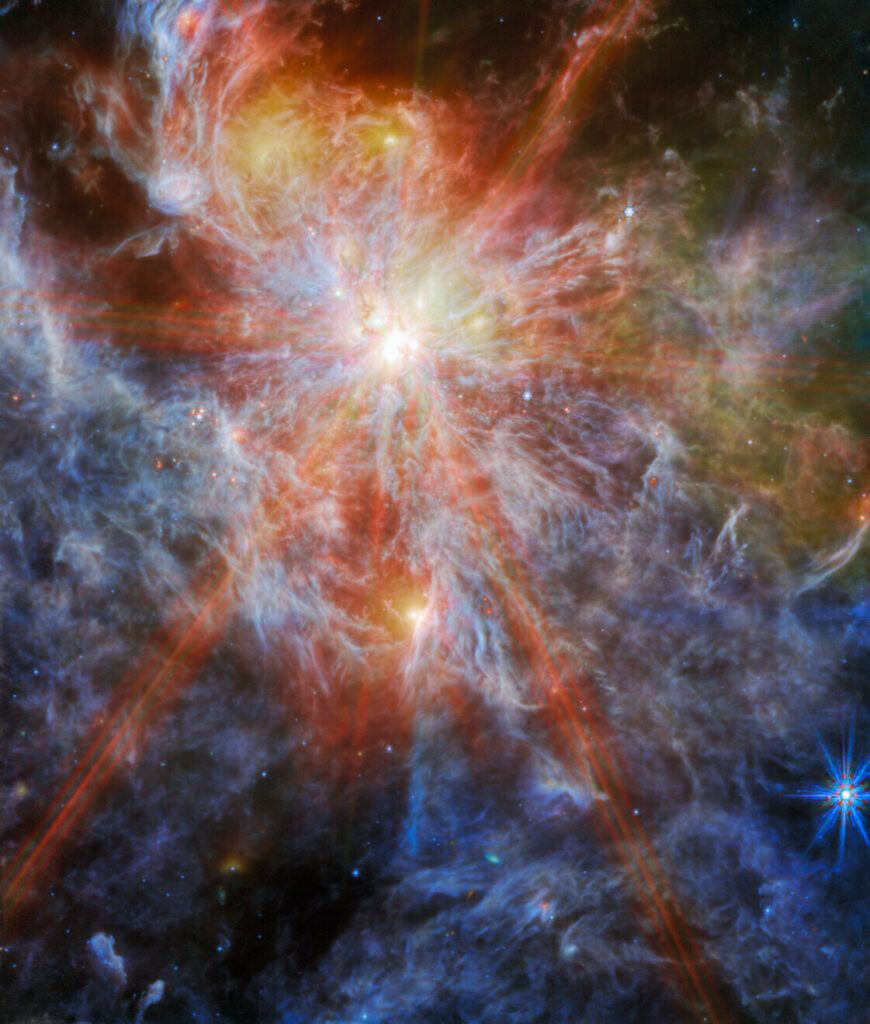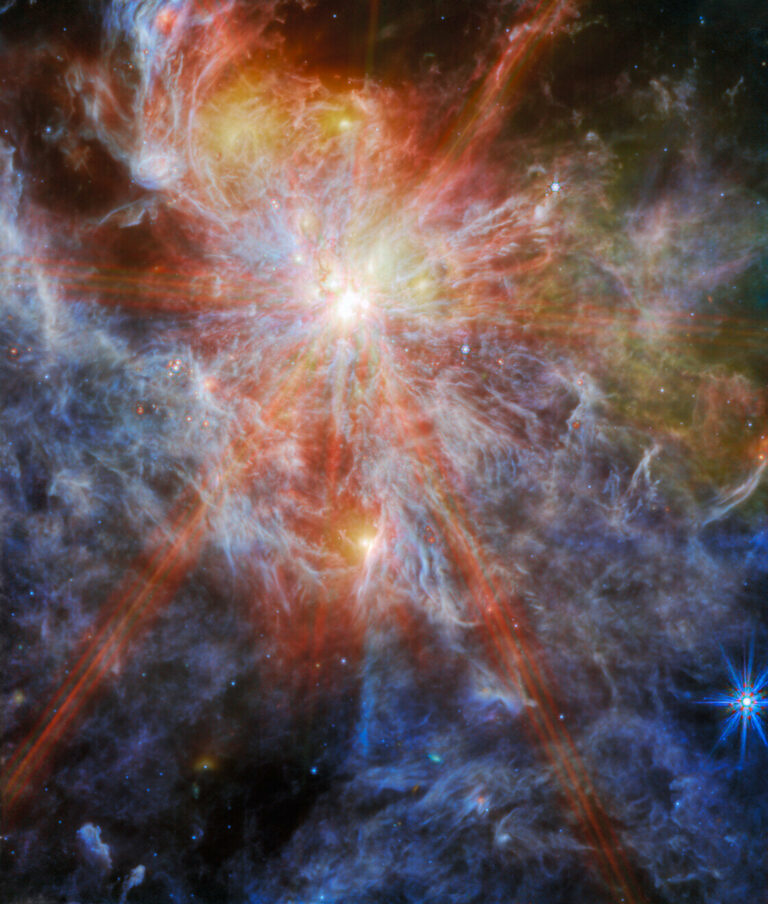The Webb Telescope Captures a Vast Star-Forming Complex
This image, taken by the NASA/ESA/CSA James Webb Space Telescope, displays an H II region located in the Large Magellanic Cloud (LMC), a satellite galaxy of our Milky Way. The nebula, known as N79, is a section of interstellar atomic hydrogen that has been ionized and captured by Webb’s Mid-InfraRed Instrument (MIRI).
N79 is a vast complex where stars are formed, covering approximately 1,630 light-years in the relatively unexplored southwest region of the LMC. It is often considered a younger counterpart to 30 Doradus (also called the Tarantula Nebula), which is another recent target of Webb’s observations. Studies indicate that N79 has a star formation efficiency that surpasses that of 30 Doradus by a factor of two over the past 500,000 years.
This specific image focuses on one of the three enormous molecular cloud complexes, referred to as N79 South (S1 for short). The distinctive “starburst” pattern surrounding the bright object is a result of diffraction spikes. All telescopes that utilize a mirror to collect light, including Webb, exhibit this type of artifact due to the telescope’s design.
In the case of Webb, the hexagonal symmetry of its 18 primary mirror segments gives rise to the appearance of six prominent starburst spikes. These patterns are only noticeable around extremely bright and compact objects, where all the light originates from a single source. Most galaxies, despite appearing small to our eyes, are dimmer and more spread out than an individual star, hence they do not exhibit this pattern.
The MIRI’s ability to capture longer wavelengths of light allows Webb to showcase the glowing gas and dust within N79. This is because mid-infrared light can penetrate deeper into the clouds, revealing what is happening inside (while shorter wavelengths of light would be absorbed or scattered by dust particles in the nebula). Additionally, some protostars that are still embedded within the region are also visible in this field.

Astronomers are particularly interested in star-forming regions like this one because they share a similar chemical composition to the massive star-forming regions that existed billions of years ago when the universe was in its prime for star formation. However, star-forming regions within our own Milky Way galaxy are not producing stars at the same rapid rate as N79 and possess a different chemical makeup. With the Webb telescope, astronomers now have the opportunity to compare and contrast the observations of star formation in N79 with the telescope’s deep observations of distant galaxies in the early universe.
These observations of N79 are part of a Webb program that focuses on studying the evolution of circumstellar disks and envelopes surrounding forming stars. This program covers a wide range of masses and different stages of evolution. Thanks to Webb’s sensitivity, scientists will be able to detect, for the first time, the dust disks around stars similar in mass to our sun at the distance of the LMC.
The image provided showcases different wavelengths of light, with 7.7 microns shown in blue, 10 microns in cyan, 15 microns in yellow, and 21 microns in red. These wavelengths were captured using specific filters (770W, 1000W, 1500W, and 2100W filters, respectively).
This article is republished from PhysORG under a Creative Commons license. Read the original article.
Do not forget to share your opinion with us to provide you with the best posts !




0 Comments